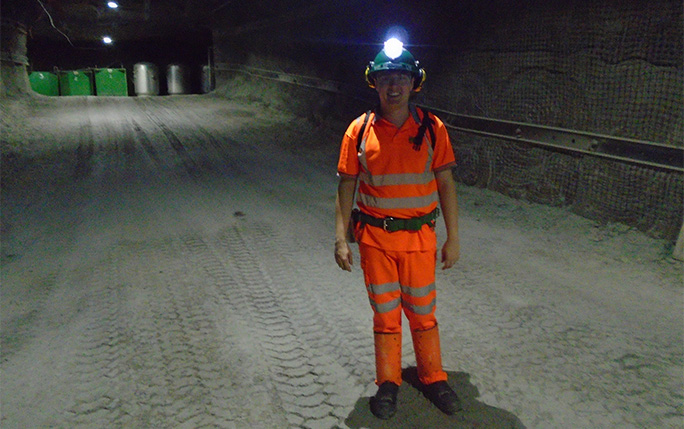CDT Student Interviews – Spotlight on Adam Lowe

In October 2020, LIV.DAT welcomed its 4th cohort of students into the Centre. Since they started their PhD’s, we have asked them a few questions as part of the CDT Spotlight Interview series. This will give you a more personal insight into work, motivation and challenges of our new students. Be sure to have a look at their personal profiles as well.
For this interview we have spoken with Adam Lowe, who will be working on hardware at the Liverpool physics department within the ARIADNE project. His research is focused on scaling up this novel neutrino detection technology for future large scale experiments such as DUNE.
Why are you interested in Physics?
“Growing up in Abingdon, Oxfordshire, meant I was surrounded by science from a young age. 20 mins one way is Rutherford Appleton Laboratory and 5 mins in the other direction is Culham Centre for Fusion Energy. No surprise really that school trips and science fairs sparked my passion for physics which was firmly cemented throughout secondary school.”
How did you end up in Liverpool?
“I came to Liverpool in 2015 starting on the Foundation Year based at Carmel College, St.Helens, with the goal being a progression to a Physics BSc with Nuclear Science. My enthusiasm for the subject naturally led me to switch to the MPhys course and no surprise, a PhD as the end goal. Through the range of modules taught at the University of Liverpool and internships I secured over the course of my undergrad (pictured is me in 2019 at Boulby Underground Laboratory where I did an 8 week summer internship), this cemented for me that a particle physics PhD, specifically neutrino physics, was ideal for myself. Liverpool has one of the best HEP departments in the UK and the ARIADNE project was perfect given the mix of software and hardware I was after in a postgraduate research degree.”
Which contribution to your field do you consider to be the most significant?
“In 1977, Carlo Rubbia proposed a new type of neutrino detector, merging two existing types of detector; that being the bubble chamber and electronic detection techniques. The ICARUS program was established by Rubbia in the same year and two decades of R and D later the first large scale LAr-TPC was successfully demonstrated at the Grand Sasso Laboratory. LAr-TPC technology revolutionised event reconstruction on large, scalable volumes, ideal for long baseline neutrino experiments. If it wasn’t for the creation of LAr-TPC technology, ARIADNE would not exist and we have Rubbia and the ICARUS team to thank for that.”
What do you hope to contribute to your field?
“ARIADNE has a huge amount to offer the field of high accuracy imaging in large volume TPCs. It’s innovative optical imaging technique offers single photon resolution, given that other LAr detectors rely on charge readout given enough ionisation, a single electron in ARIADNE can generate 100s of photons for imaging. With all that this technology can offer, it’s an incredibly exciting time to be joining the team and naturally, we all hope that our contribution to LAr-TPC technology will be part of the collective effort to discover new physics, whether that is neutrino, DM or BSM.”
Where do you hope to end up after your PhD?
“I’m hoping to remain in academia, I’d love to stay at Liverpool in a postdoctoral role within ARIADNE given further scaling up that we would like to carry out and wherever this may take us!”
Why do you think Big Data is important?
“Big Data is a vital part of ARIADNE, when the detector is run, either on a beam line or even background cosmics, masses amounts of data is collected. This data is key to best characterizing the detector; especially when developing novel detector technology as to demonstrate its capabilities over existing hardware. The ARIADNE team has had to create custom software to analyze the Time Pix camera data in order to identify events based on their light signature. This takes in many elements of Big Data, aside from analyzing data collected, Monte Carlo simulations are key for correcting for electron drift time and there is scope for machine learning which is currently being explored. So Big Data is very important for ARIADNE but also Physical Sciences in general and will be essential for new science.”